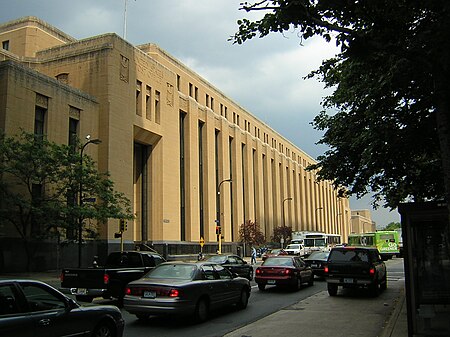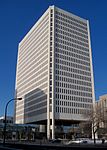Minneapolis Post Office
Art Deco architecture in MinnesotaBuildings and structures in MinneapolisGovernment buildings completed in 1933Post office buildings in Minnesota

The Minneapolis Post Office is the central post office for the city of Minneapolis, Minnesota in the United States. Located on the west bank of the Mississippi River, the facility extends west to east from Hennepin Avenue Bridge to the Third Avenue Bridge and north to south from the West River Parkway on the Grand Rounds Scenic Byway to First Street. Its ZIP code is 55401.
Excerpt from the Wikipedia article Minneapolis Post Office (License: CC BY-SA 3.0, Authors, Images).Minneapolis Post Office
James I. Rice West River Parkway, Minneapolis
Geographical coordinates (GPS) Address Nearby Places Show on map
Geographical coordinates (GPS)
| Latitude | Longitude |
|---|---|
| N 44.983265 ° | E -93.265032 ° |
Address
Central Post Office
James I. Rice West River Parkway
55406 Minneapolis
Minnesota, United States
Open on Google Maps









